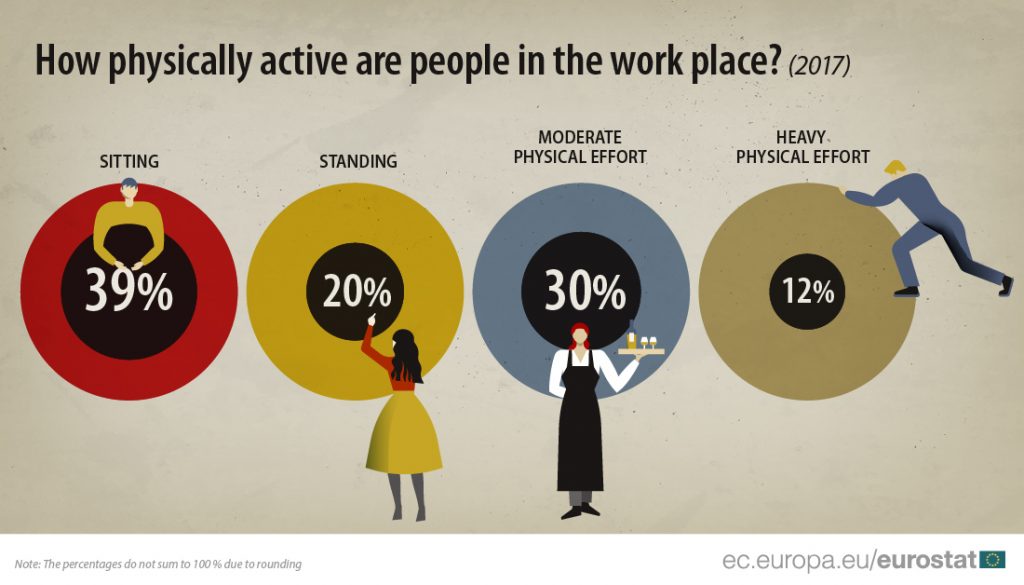More than half of Hungarians are doing physical work!

Eurostat revealed EU statistics on what type of jobs people are doing in terms of physical involvement within the European Union. It seems that there are more Hungarian employees doing heavy or moderate physical work than the EU average.
Topics like Hungary’s labour market shortage and the emigration tendency of Hungarian citizens are often featured on Daily News Hungary, but this time, let us look at how many Hungarians worked non-physical and physical jobs in 2017.
Hungarian news portal hvg.hu posted an article with the title “There are hardly any countries where more people do hard physical work than we do”. The article is based on Eurostat data, and the statistics are from the year 2017.
According to Eurostat’s survey, there are four categories of employment in terms of physical activity:
- sitting,
- standing (also non-physical),
- moderate physical efforts,
- and heavy physical efforts.
[button link=”https://dailynewshungary.com/could-the-central-banks-plan-stop-the-hungarian-emigration-crisis/” type=”big” newwindow=”yes”] Could the Central Bank’s plan stop the Hungarian emigration crisis?[/button]
Non-physical workers
In Hungary, exactly the third of all workers (33.3%) sits during work, which includes not only office workers in front of computers but also taxi drivers, public transport drivers or call centre agents. The EU’s average of sitting workers is 38.6%. The nations with the most-sitting workers in the EU appear to be the Nederlands (55.1%), Germany (53.9%) and Luxembourg (52%).
The second category is that of standing jobs that are not considered physical work, such as shop assistants and teachers. 14.6% of Hungarians do standing work, while the EU’s average is 20%. The nations working while standing the most are North-Macedonia (46.3%) and Spain (43.1%).
In total, 47.9% of Hungarians are non-physical employees, this is about 11% less than the European Union’s 59% average.
[button link=”https://dailynewshungary.com/hungarian-labor-market-in-extreme-lack-of-workforce/” type=”big” color=”red” newwindow=”yes”] Hungarian labor market in extreme lack of workforce[/button]
Physical workers
Eurostat’s statistics also show that the biggest percentage of Hungarians were employed in positions involving moderate physical works, which makes up 36.1% of all Hungarians on the labour market. However, there are 11 more countries in the EU in which the percentage of moderate physical workers makes up a higher number. In Lithuania, for instance, moderate physical workers make up 50% of the population, whereas, in Greece, it is 46% (most likely because of hospitality and tourism jobs). The EU’s average of moderate physical working employees is 30%.
Now, turning to jobs that require heavy physical work, the most “heavy-working” nations are
Greece (21.5%), Poland (16.1%) and Hungary (15.9%). The EU average is 12% for jobs with heavy physical involvement.
The nations with the smallest percentage of heavy physical workers are Malta (5.9%), Denmark (6.6%) and the Netherlands (7.7%).

Find Eurostat’s full data table from the link below:
[button link=”https://ec.europa.eu/eurostat/web/products-eurostat-news/-/DDN-20190305-1?inheritRedirect=true&redirect=%2Feurostat%2F” type=”big” color=”purple” newwindow=”yes”] Sit at work? You are one of 39%[/button]
Source: Eurostat





